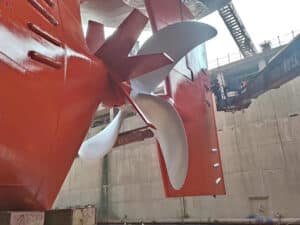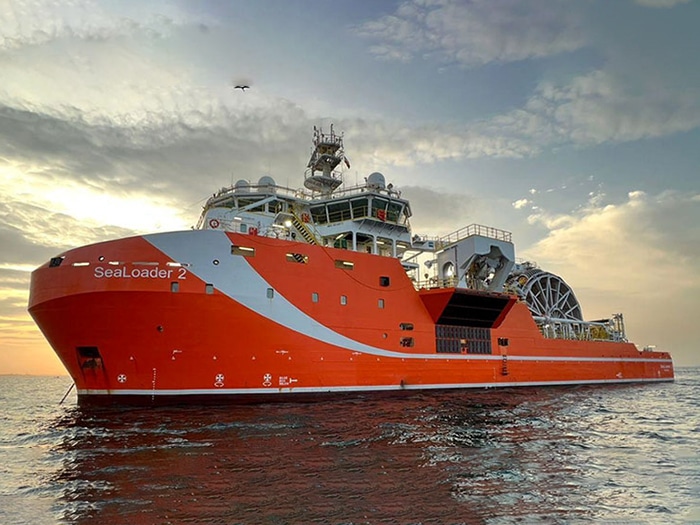
SeaLoading and Petrobras eye build of new cargo transfer vessel
Written by Nick Blenkey
SeaLoader 2 [Photo: MOL]
Mitsui O.S.K. Lines (MOL) reports that its wholly owned subsidiary, SeaLoading Holding AS has signed a charter contract for the cargo transfer vessel SeaLoader 2 with Petrobras. The two companies have also decided to enter into negotiations on placing a shipbuilding contract for a third cargo transfer vessel by the end of 2024.
SeaLoading’s cargo transfer vessels (which it logically, but confusingly, refers to as CTVs) enable crude oil from a floating production, storage & offloading system (FPSO) to be directly loaded onto a tanker of up to VLCC size without the use of DP shuttle tankers with special cargo handling equipment. Usually, shuttle tankers transport the oil from the FPSO to a storage terminal or to calm waters where it can be transferred to a crude oil tanker.

Eliminating all this by connecting a SeaLoading cargo transfer vessel between the FPSO and the crude tanker can thus dramatically increase the efficiency of crude oil logistics. Currently, there are only two of the vessels in the world, both owned by Arendal, Norway, headquartered SeaLoading, which holds the patent for the technology.
In January 2022, SeaLoading reached an agreement with Petrobras that saw one of the two vessels, SeaLoader 2, operate for a trial period during which it successfully completed more than 30 crude oil offloading operations from Petrobras FPSOs located in the Santos Basin, Brazil, transferring the cargo to tankers of up to VLCC size. After the successful conclusion of the trial agreement, the SeaLoading vessel was placed on a time charter contract with Petrobras in 2023. Now, SeaLoading has signed a memorandum of understanding (MoU) with Petrobras to start negotiations for a newbuilding cargo transfer vessel by the end of 2024.
MOL says that the use of the vessels will enable a significant reduction in CO2 emissions compared to the transfer of crude oil by DP shuttle tankers. Specifically, the cargo transfer vessels are expected to achieve a 60% reduction in CO2 emissions off the Brazilian coast compared to using a DP shuttle tanker for offloading in the Santos basin, Brazil and about 80% when used off the coast of Uruguay.




